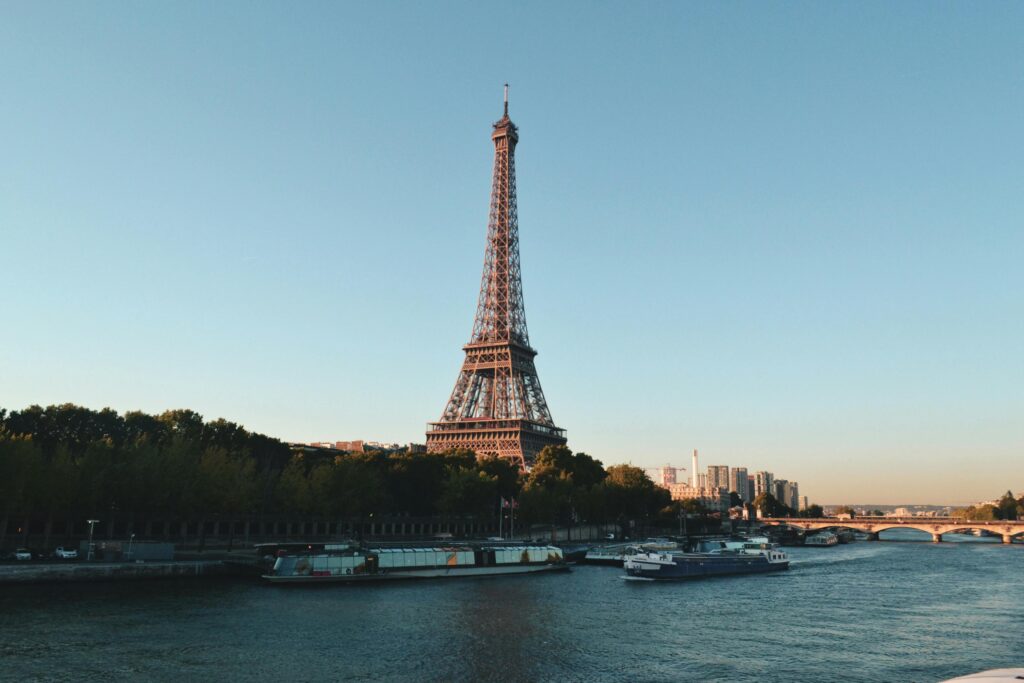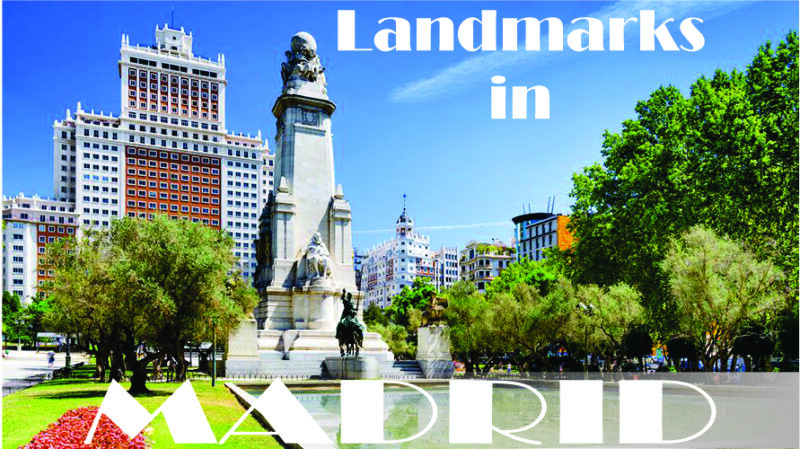|
Getting your Trinity Audio player ready...
|

Spain is every traveler’s ideal destination, offering everything from sun-drenched islands and lively cities with modern architecture to coastal towns and snow-capped mountains.
Spain, which is located where the Atlantic and Mediterranean seas converge, is known for its mouthwatering cuisine and drink scene as well as its striking and beautiful scenery.
With this article on the most beautiful places to travel to in Spain, you can plan the perfect trip and see everything from Seville and Ibiza to Barcelona and Madrid.
Contents at a Glance
- 1 13 Best Tourist Sites in Spain
- 1.1 1. Barcelona
- 1.2 2. The Alhambra, Granada
- 1.3 3. Ciudad de las Artes y las Ciencias, Valencia
- 1.4 4. Ibiza
- 1.5 5. Plaza Mayor, Madrid
- 1.6 6. The Mezquita Cordoba
- 1.7 7. San Lorenzo de El Escorial
- 1.8 8. Guggenheim Museum, Bilbao
- 1.9 9. Plaza de España and Parque de María Luisa, Seville
- 1.10 10. Beaches of Gran Canaria
- 1.11 11. El Teide, Tenerife
- 1.12 12. The White Towns of Andalucía
- 1.13 13. Ronda
- 2 Frequently Asked Questions
- 3 2. What is the most beautiful city in Spain?
- 4 Conclusion – 13 Best Tourist Sites in Spain
13 Best Tourist Sites in Spain
1. Barcelona
Barcelona, a city in northern Spain, is one of the most popular travel destinations in the nation. Interestingly, this is because it has everything travelers want from vibrant culture, active shopping, and a bustling nightlife to historic architecture.
Amazingly, it is also home to the architectural wonders of renowned Spanish architect Antoni Gaudi. Such architectural works include the famous Sagrada Familia church and Casa Batllo.
Amazingly, These two remarkable constructions combine intriguing patterns, colors, and shapes in intriguing ways. Walking down Barcelona’s tree-lined pedestrian promenade, La Rambla, and tanning on Barceloneta, one of the city’s most well-liked beaches, are popular pastimes.
2. The Alhambra, Granada
Granada, the provincial capital of Granada, is situated in southern Spain at the foot of the Sierra Nevada mountains. Granada is home to the world-famous Alhambra, the pinnacle of Moorish art that perfectly captures Andalusian history, as well as an exciting nightlife and a perfect blend of traditional cultures.
Numerous people travel to Granada specifically to view the Alhambra, a medieval complex that dominates the city and is considered one of Europe’s greatest architectural sights.
The Alhambra, the final bastion of the Moors in Europe, provides visitors with amazing vistas of the city below, lush and stunning gardens, dripping and flowing water elements, and magnificent ornamental architecture.
3. Ciudad de las Artes y las Ciencias, Valencia
Valencia was left with a wide, level riverbed that was crossed by bridges when the river that had frequently inundated the city was rerouted. The talented Spanish architect Santiago Calatrava built a stunning collection of buildings that have drawn interest from connoisseurs of modern architecture using this simple color scheme.
In addition to the structures, Valencia is home to some of the most well-liked tourist destinations in Spain, including museums, performance spaces, and an aquarium.
Constructed in the shape of a water lily, L’Oceanogràfic is the largest oceanographic aquarium in Europe, featuring structures devoted to various aquatic ecosystems ranging from the tropics to the poles.
4. Ibiza
Ibiza is renowned across the world as a destination for sun-loving fun. Thanks to its great beaches and vibrant towns, the island has always been popular with young people.
Ibiza’s beaches are crowded with people during the day as they enjoy the surf and sun, while at night, specific sections serve as popular gathering places where DJs play the newest music.
Stroll through the cobblestone lanes of Dalt Vila, the medieval quarter recognized by UNESCO, and you will come across a startling amount of well-preserved Gothic Catalan buildings. The fortress, perched above it all, provides breathtaking vistas.
You may also like: 13 Famous Tourist Sites in Croatia
5. Plaza Mayor, Madrid
Madrid, the largest and capital city of Spain, is well-known for its vibrant nightlife. The city is one of the most vibrant and multicultural cities in Europe. This is because Spain has a variety of ethnic groups that calls it home.
The Plaza Mayor, one of Madrid’s most popular tourist destinations today, has long been the site of ceremonial events. Notable events in this plaza include the coronation of saints, the burning of heretics. Other events hosted here include the announcement of a new king, as well as open entertainment like bullfights and chivalric contests.
Madrid’s living room, the cafés that overflow onto the pedestrian-only stone pavement of the plaza and the restaurants that are shaded by its arcades are well-liked gathering spots for both locals and visitors.
6. The Mezquita Cordoba
The provincial capital of Cordoba, located in southern Spain’s Andalusian region, is Cordoba. The Mezquita, Cordoba’s main attraction, is surrounded by a labyrinth of narrow medieval alleyways, plazas, and whitewashed courtyards that make up the ancient neighborhood.
The Mezquita was first constructed as a mosque, but it today stands as a magnificent church with much of its original design. The red and white striped arches atop its forest of columns, reminiscent of the Islamic style, serve as a constant reminder of Córdoba’s grandeur and significance during the Middle Ages.
7. San Lorenzo de El Escorial
The summer residence of Spain’s kings was San Lorenzo de El Escorial, approximately 45 kilometers northwest of Madrid. In 1563, construction on an enormous complex that would include a monastery, church, royal palace, mausoleum, library, and museum was started here to honor Philip II and his reign.
Highlights of the monastery include the Panteón de los Reyes, the Baroque burial tomb of the Spanish kings, and the library, a large chamber with more Tibaldi murals. Other notable features are the domed and frescoed ceilings by Tibaldi in the apartments of the lower cloister.
8. Guggenheim Museum, Bilbao
Its edifice truly must be seen to be believed in; no snapshot has ever done its symphony of shapes justice, so alive they look poised to take flight. American architect Frank Gehry subverted the idea of modern architecture by combining swooping titanium sheets with blocks of limestone.
His success was so great that two new terms sprang from it: “architourism,” which refers to an entire branch of the travel industry centered around iconic pieces of modern architecture, and “The Bilbao Effect,” which describes a city’s capacity to turn its fortunes around by erecting a single world-class structure.
9. Plaza de España and Parque de María Luisa, Seville
The large Parque de María Luisa, which is located across central Seville and consists of a half mile of gardens. There are also lawns and shaded paths along the river, centers around the Plaza de España. You can take a horse-drawn carriage trip or rent a pedal car. Every day is busy, but on Sundays, different families fill the park.
Strolling through the park and taking the side routes into gardens covered by hedges is the finest way to take in its enormous beauty. Trees, flower beds, lakes, gazebos, and the artificial rock mountain with a waterfall all make up its beautiful landscape.
You may also like: 7 Best Belgian Casinos to Visit
10. Beaches of Gran Canaria
Gran Canaria is the largest of the Canary Islands. It is mainly recognized for the golden-sand beaches that adorn much of its southern shore.
The family-friendly Playa de Las Canteras is located in the capital city of Las Palmas. It is also well-liked for its tranquil waves, which are shielded by a natural barrier made of volcanic rock.
The Playa del Inglés in Maspalomas is the biggest and liveliest beach, with many restaurants, shops, cafés, play parks, and other entertainment options. One of the archipelago’s natural treasures, a sizable protected area of enormous dunes, is located at one end.
11. El Teide, Tenerife
This ancient volcano, which is still smoldering, is the highest peak in Spain. It also boast as one of the greatest natural wonders of Europe. The Parque Nacional del Teide is located in the middle of the island of Tenerife. It is made up of the Pico del Teide and the Caldera de las Cañadas, a massive volcanic crater.
Although you can climb El Teide’s cone, taking an eight-minute cable car ride will get you far closer to the summit. When the weather is clear, you can see the entire archipelago and even North Africa. Interestingly, north Africa is the closest land mass to the Canary Islands.
12. The White Towns of Andalucía
The White Towns, also known as Pueblos Blancos, are stunningly situated atop the rocky crags of southern Andalucía. From a closer look, they resemble dabs of white frosting. Their significance stems from the region’s rich and varied history.
These hilltop whitewashed settlements are hidden among the mountains that climb straight from the sea to the west of Gibraltar. These little white-house communities, numbering 19, are located in the vicinity of the Grazalema Nature Reserve.
13. Ronda
 One of the highlights of a trip to Spain’s Andalucia region is the medieval city of Ronda. This city is perched as a rocky outcrop with a medieval bridge and a well-preserved ancient town.
One of the highlights of a trip to Spain’s Andalucia region is the medieval city of Ronda. This city is perched as a rocky outcrop with a medieval bridge and a well-preserved ancient town.
Ronda is incredibly easy to navigate on foot. The Puente Nuevo bridge, which spans the 100-meter-deep Tajo de Ronda valley, the Plazas de Toros bullring, and La Cuidad, the historic Moorish town center, is just a short stroll from one another.
You may also like: 13 Tourist Attractions in Isle of Man
Frequently Asked Questions
1. What famous tourist attraction is present in Spain
Spain’s most popular tourist destination is still the magnificent Sagrada Familia Barcelona in Barcelona.
2. What is the most beautiful city in Spain?
Granada, Andalusia is a captivating city that is deserves to be among Spain’s most beautiful locations.
3. What currency does Spain use?
Spain utilizes the Euro as its currency, just like the majority of the European Union.
4. When is the best time to travel to Spain?
March – May in the spring or September – November in the fall are the ideal times to travel to Spain. But it is open all year round due to its mouthwatering cuisine and world-class museums. In addition to this is its vibrant flamenco music and dance scenes.
Conclusion – 13 Best Tourist Sites in Spain
Spain is a remarkably diverse country where modern innovation coexists with old history and natural beauty. This is harmoniously mixed with its architectural magnificence. Discover the warmth of Spain’s lively towns and the rich tapestry of its cultural legacy with these top-rated tourist destinations.
Travelers from all over the world find Spain to be a genuinely extraordinary destination. Sure, this is due to its unique blend of heritage, innovation, and natural beauty.



















